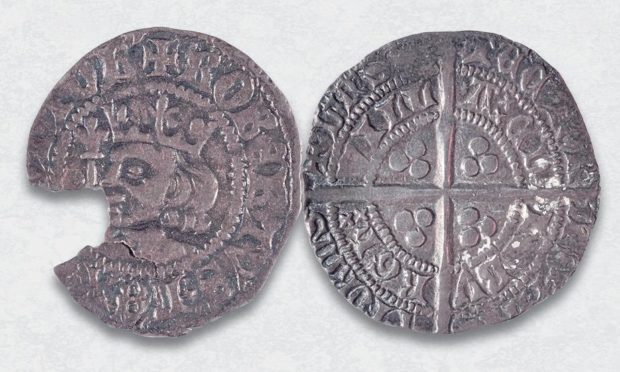When Ingrid Bergman asks Humphry Bogart what he’s thinking in the film Casablanca, I’m sure most people don’t realise that they were speaking the Scots language!
Or when the chancellor stands up to make his Budget speech today, how many people will know that the word penny was in fact first coined (ahem!) in the form we all know today in a Scottish manuscript of the 1390s?
The humble penny was the main type of coin in people’s purses for centuries. Of course, it changed greatly both in design and material over that time. Originally it was made of silver. They were literally struck to be made. A pellet (planchet) was placed between the two engraved dies (one “heads”, other “tails”) and then the top die hit with a hammer. This is why old coins never look exactly alike, as quality depended upon the wear on the dies and the skill or otherwise of the moneyer on the day. More recent times has seen the penny mass-produced by machines at Llantrisant in Wales. Today, rather than being silver, pennies are made of copper-plated steel and not a lot of copper at that!
Until 1709, Scotland struck its own distinctive coinage. Over the centuries, Scottish money was made in numerous towns. The last mint, in Edinburgh, continued in existence until 1817, by then as an administrative centre, with the money made elsewhere.
This is a silver penny of Robert II, King of Scots, who was crowned 650 years ago on March 26 1371. Robert’s reign marked a period of prosperity for Scotland following the end of the Second War of Independence. Robert II was the first of the Stuart kings and queens of Scotland, and ultimately of the United Kingdom until 1689, when the Catholic James VII (2nd of England) was deposed. The penny was struck at Edinburgh Castle, one of three mints in Scotland during Robert’s reign, the others being Perth and Dundee. We know who made the dies for the coin: Bonagius, who came from Florence, and was chief moneyer to three Scottish Kings – David II, Robert II and Robert III. If you look carefully at this coin you can just make out his initial just behind the king’s head. The portrait is in profile, which is a direct contrast to English coins of the time that had the portrait face on.










